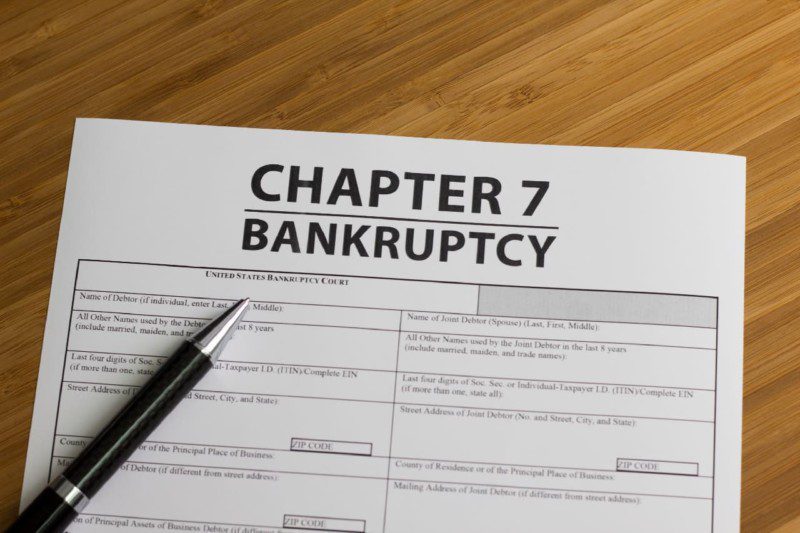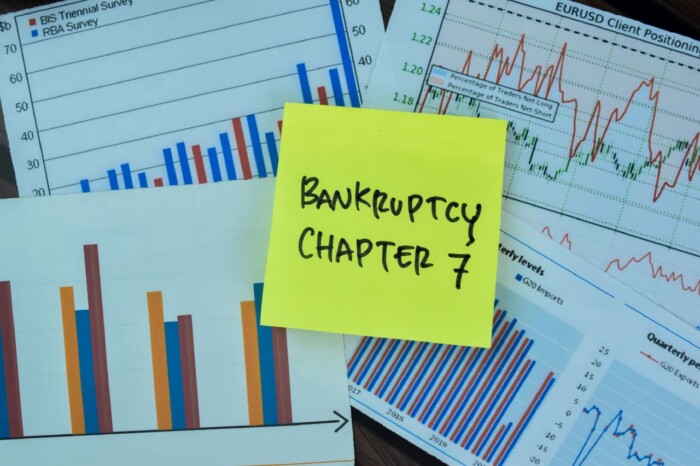When contemplating bankruptcy, many people have a common concern. The mounting debt can put them under increasing stress. Even if the sum is small, the likelihood of paying it back diminishes. If you’re one of these people, you might have wondered if you’ve accumulated sufficient debt to file for bankruptcy.
’How much financial hardship must one endure before considering bankruptcy? Can a specific sum be provided? Can I keep my credit cards in bankruptcy?’ These might be some questions you’ve thought about your current situation.
The solution is simple, but under US bankruptcy laws, a debtor doesn’t have to have a certain minimum amount of debt before filing for bankruptcy protection. Your unique financial situation depends on whether bankruptcy is your best option.
In this article, let’s delve deeper into these scenarios to help you determine whether or not the weight of your debt and the difficulty of your current situation warrant bankruptcy.
Will Chapter 7 Bankruptcy Apply To You?
Although a debt threshold is not needed to apply for Chapter 7 bankruptcy, individuals must still meet specific standards under federal law.
You need to show that you qualify financially for Chapter 7 bankruptcy. Instead of concentrating on debt, it looks at how much you earn each month. You can file for Chapter 7 bankruptcy if your income is below the threshold.
The second part of the means test is required if your income is higher than the state median household income. In addition, you must finish a credit counseling course, and a money management course before the bankruptcy court will rid you of your debts. Your debts will be discharged in that specific sequence.
Also, there’s a limit to how often one can declare bankruptcy. If you’ve filed for Chapter 7 bankruptcy in the past eight years, you can’t file again today.
What Happens In A Chapter 7 Bankruptcy?
If your Chapter 7 bankruptcy petition is accepted, many unsecured debts will be discharged while others will stay with you. Some others might require case-by-case resolution.
A court of law will require you to send in paperwork and payments if you want to apply for Chapter 7 bankruptcy. It’s possible to negotiate lower filing fees if you’re experiencing financial hardship.
Here’s a step-by-step guide to help you file for Chapter 7:

- Debtors must complete paperwork outlining their financial situation, including contracts, leases, assets, liabilities, income, and spending.
- Chapter 7 bankruptcy filers must pay anything from USD$20 to USD$100 for pre-bankruptcy credit counseling. Nonprofit credit counseling firms commonly provide these classes to determine whether or not bankruptcy is necessary, as opposed to alternative options (debt management, debt consolidation, debt settlement, nonprofit debt settlement).
- If bankruptcy is your best option, you must submit the completed paperwork from step 1 to your local court.
- Next, you must pay for the procedure out of your remaining funds. Filing a bankruptcy petition costs USD$335, plus additional court fees (which vary by state). You’ll likely pay legal fees unless you intend to continue representing yourself.
- When you declare bankruptcy, the court will generate paperwork about your bankruptcy and make this available to the public.
Undoubtedly, you have to be thorough to complete your application. A court of law won’t want you to leave any stone unturned.
Filing For Chapter 7 Bankruptcy
Your lawyer will walk you through filing for bankruptcy and what to expect from the court. The first step is to file a bankruptcy petition, which immediately stops any further collection efforts on your debts once your creditors are aware of the filing. You’ll also need to accomplish the following forms and documentation:
- Your entire inventory of possessions
- Information about your debts, including who you owe them to and how much you owe them.
- Comprehensive financial reporting
- Documentation of past tax returns
- Acceptable evidence of recent credit counseling
Your case will be filed with the courts once the necessary paperwork has been compiled. In Chapter 7 bankruptcy, a case trustee will meet with you and your attorney to assess your financial status and notify your creditors of your filing.
If you submit a petition for Chapter 7 bankruptcy and get your case dismissed, you will no longer be legally responsible for any debts you listed in your bankruptcy petition.
In Summary
There’s no debt threshold below which one must petition for bankruptcy protection. But filing for a Chapter 7 bankruptcy will have lifelong consequences. Take your time and consider all the factors involved. Filing for bankruptcy can provide the clean slate you need, but there are more complex solutions to financial difficulties. Talk to an expert about the costs and benefits of bankruptcy before making a final decision.





